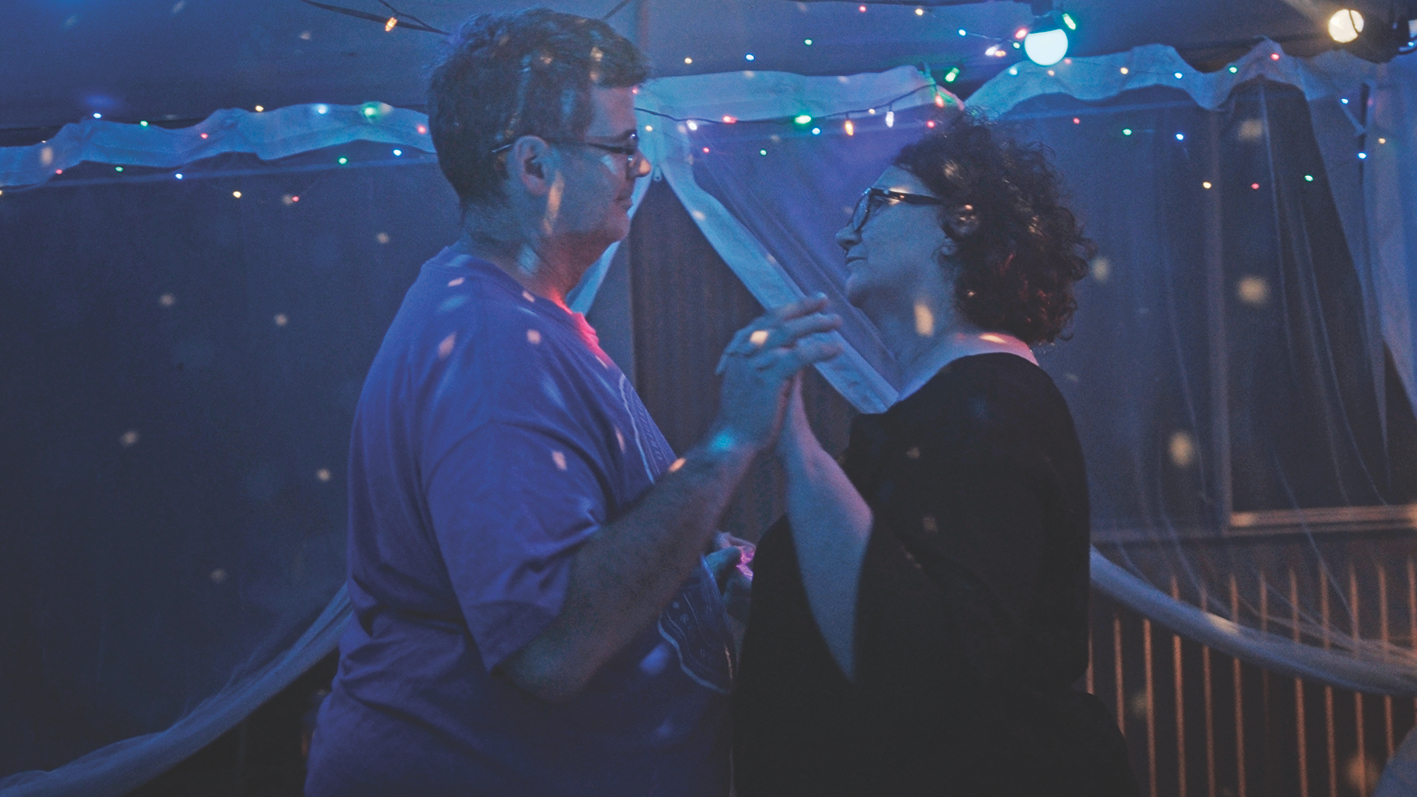Watching Australian writer/directorSari Braithwaite’s second feature-length documentary, Because We Have Each Other (2022),one might recall the famous final line from Samuel Beckett’s 1953 novel The Unnamable:‘You must go on, I can’t go on, I’ll go on.’[1]Samuel Beckett, The Unnamable, Faber and Faber, London, 2010 [1953], p. 134. With these short phrases, Beckett describes the nature of human existence via the search for the self – or, as one review of the book summarises, ‘the lifelong ordeal of suffocation, which cannot stop’.[2]Stephen Spender, ‘Lifelong Suffocation’, The New York Times, 12 October 1958, <https://archive.nytimes.com/www.nytimes.com/books/97/08/03/reviews/beckett-unnamable.html>, accessed 12 August 2022.
This may sound bleak, but – despite some dark moments – Braithwaite’s lyrical portrayal of the day-to-day struggles of a working-class neurodiverse family is anything but. Rather, it is a documentary that finds beauty in everyday occurrences and struggles, highlighting the loving bond of its subjects. Through adversity, they find the strength to live their best lives thanks to – as the film’s title suggests – the support they can offer and receive from one another. This key theme, of tenderness and loving bonds guiding the family in the face of all of life’s challenges, underpins this poetic and intimate eighty-nine-minute work.
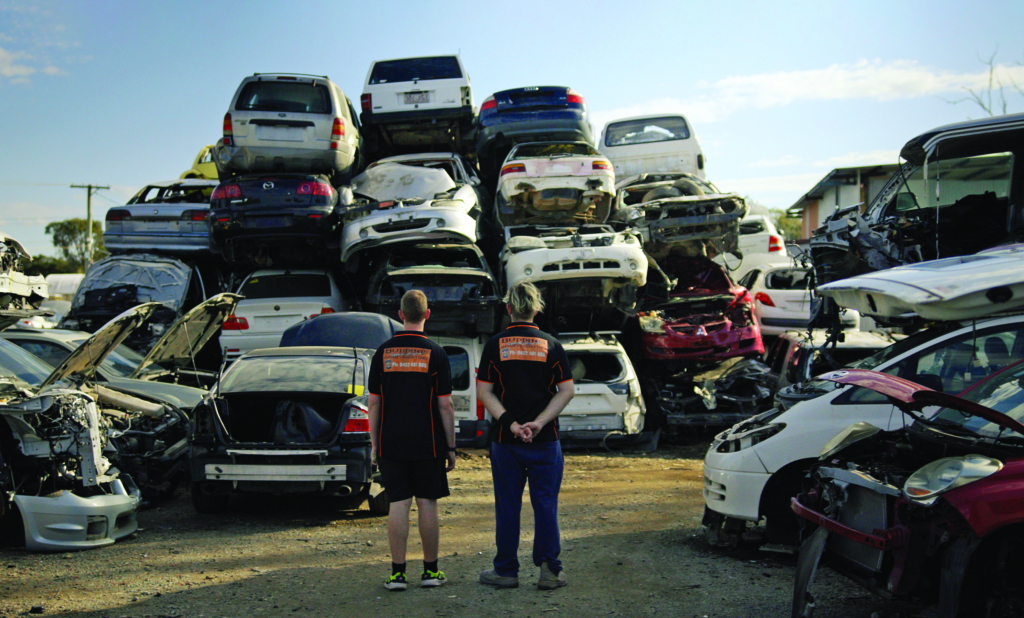
Because We Have Each Other was made over five years with the participation of the family. It begins with an introduction presented in voiceover by the documentary’s central protagonists: Janet Barnes, a 58-year-old full-time carer, and her 52-year-old husband, Brent, a self-professed ‘motorcycle spray-painting nut’ who goes by the nickname ‘Buddha’. In a reflexive moment that takes us behind the scenes of the film, we hear the sounds of chaotic family life as Janet tries to corral family members for this recording. ‘Hurry up, we’re doing audio!’ she shouts at stepson Brendan, who is in the toilet. Following this sequence, a series of portraits and family photos appear on screen as the couple recall meeting almost twenty years previously and their subsequent marriage in 2007. Janet has two daughters from a previous marriage, while Buddha has one daughter and two sons. ‘This is the story of our wonderful, neurodiverse family,’ exclaims Janet, in a welcoming tone. ‘I don’t know why anyone would want to see a movie about us,’ Buddha remarks. ‘We hope you like the movie. If you don’t, go tell someone who gives a … !’ This exchange sets the film’s warm and lighthearted tone, and indicates Janet’s role as organiser of the family unit.
The first third of the documentary provides insights into each character’s dreams and struggles as they negotiate everyday life in the suburbs of Logan City, on the outskirts of Brisbane. We get to know Buddha, whose working days are spent labouring at his spray-painting business, with his sons Brendan (who works with his father as an apprentice) and Dylan nearby. Buddha was illiterate when he left school at fifteen, his dyslexia having gone undetected, but he later taught himself to read by studying car magazines. By running his own business, he has achieved some level of success; however, the profits are thin, leaving him with little free time to pursue his love of motorbike racing. In an audio track that plays over shots of his seemingly long commute home, he reveals, ‘We’re broke. We’ve got enough money to survive this week.’ Other voiceover passages reveal his lack of career options, and how heavily they weigh on him, alongside his family responsibilities. ‘You don’t see many spray painters my age these days,’ he explains. ‘Most of them have given up … got real jobs. I’m still on the gun.’
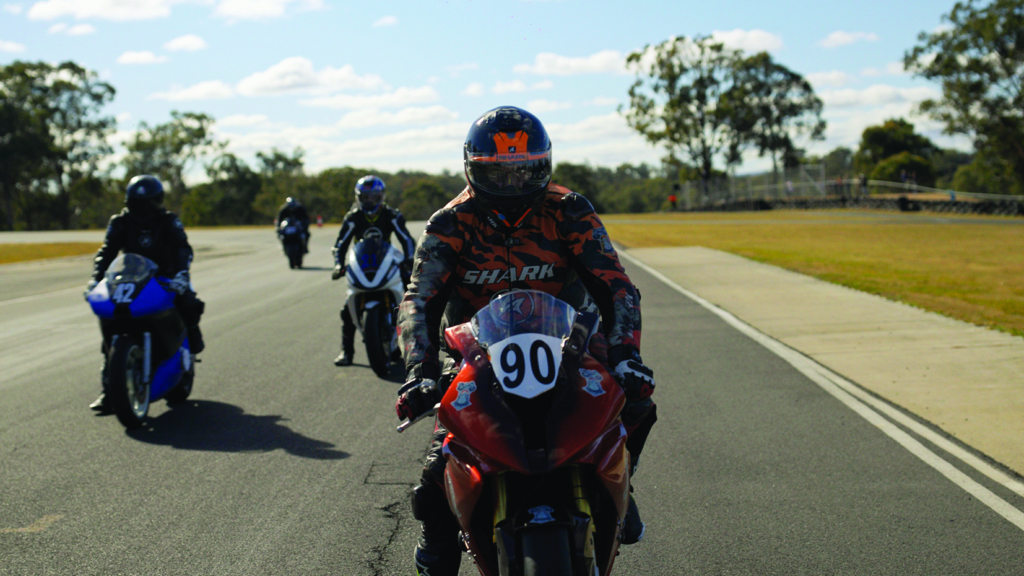
The filmmakers capture elder son Brendan’s transition from apprentice to fully-fledged tradesman, which is marked by a worksite visit from a Work Skills representative and celebrated with cake and cheers. The softly-spoken, autistic Brendan seems pleased with his achievement, but the moment raises unarticulated questions about his ability to move beyond the support structure provided by his father’s supervision. Buddha’s headstrong daughter Kylie lives away from the family in a group home, and holds down a packing job in a warehouse. Like Buddha’s younger son, Dylan, she is often depicted alone, pondering what the future might bring.
The head of the family unit, Janet is the one who holds everything – and everyone – together, with optimism and humour. She is full-time carer for her autistic daughter Becky, who is one of only eighty people in the world recognised as having the condition hyperthymesia, or ‘highly superior autobiographical memory’ – meaning she can recall each individual day of her life, including the emotions that accompanied events, with vivid detail.[3]For more on highly superior autobiographical memory, see David Robson, ‘The Blessing and Curse of the People Who Never Forget’, BBC Future, 27 January 2016, <https://www.bbc.com/future/article/20160125-the-blessing-and-curse-of-the-people-who-never-forget>, accessed 12 August 2022. Janet is also a regular support for her younger daughter, Jessica, a comedian and lover of old Hollywood films who experiences anxiety and depression. Braithwaite captures shots of Janet’s gentle interactions with her daughters in the family home as she serves as amateur hairdresser for Jessica and day-to-day companion for Becky. A third of the way into the film, it is revealed that their close bond has been shaped by significant traumatic events. In an audio recording overlaid on shots of gardening activities, Becky reveals that both she and Jessica were abused by an unnamed person when they were young children. ‘When I first approached the police, [they] didn’t believe me,’ Becky explains. ‘They thought I was lying […] The only person who I felt truly believed me was my mum.’ The film shows how the crime continues to impact the sisters and their family as they navigate their way through police investigations and a court case, events that are recalled but not shown in the film.
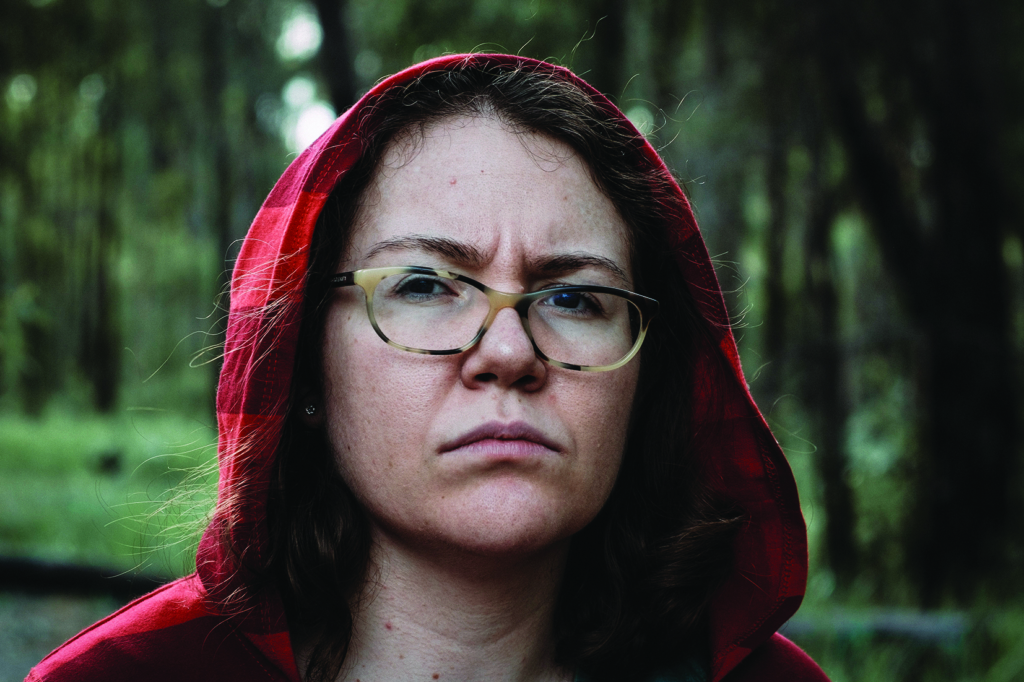
In addition to these various commitments and stressors, the family occupy themselves with several pets and pastimes (such as motorbike riding, martial arts and painting), meaning that time together is precious and little moments of reflection are savoured. Janet – a self-professed ‘positive person’ who describes her life as ‘mind-blowingly wonderful’ – seems the most conscious of this: in one scene, she stands alone in her driveway just after dawn, sipping a cup of tea and listening to the birds chirping. Braithwaite comments on how the film, too, finds beauty in moments of adversity:
For Janet and Buddha’s family, what is despairing often hangs together with what is beautiful. In the midst of so much pain, there is always a lot of laughter. That’s where grace lives – when things are awful and joyous all at once – and this family walks that tightrope every day.[4]Sari Braithwaite, quoted in ‘Interview with Sari Braithwaite’, Arenamedia, Because We Have Each Other press kit, 2022, p. 6.
Under Braithwaite’s direction, the film adopts an intimate but unobtrusive observational style, with no direct address to camera by the participants. Rather, voiceover tracks scattered through the film provide the most intimate access to each character’s vulnerabilities, hopes and dreams. These tracks were sourced from over seventy hours of unstructured audio that Braithwaite recorded over the five years of filming, drawing on her background as an oral historian.[5]Because We Have Each Other press kit, ibid., p. 4. Editor Patrick McCabe recalls how participants
shared more of themselves when the camera was not around, and when we paired these very personal thoughts from their audio interviews with visuals of their everyday lives, the result felt like a magical insight into their worlds.[6]Patrick McCabe, quoted in ibid., p. 10.
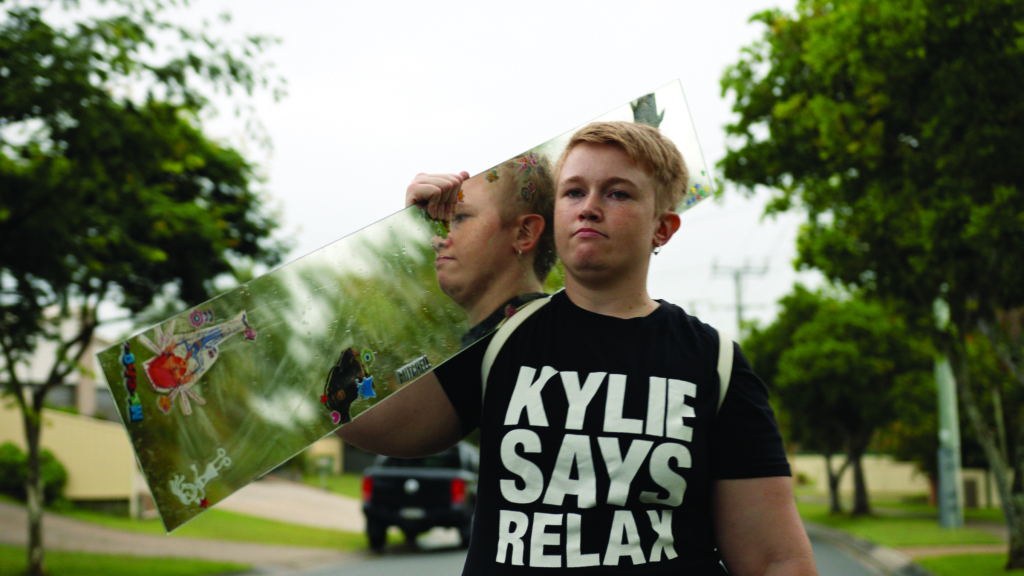
This approach also helps to represent neurodiverse people in an authentic way, as is evident in the scenes showing Kylie at work in the packing factory. Part-way through the film, she drinks a fruit box while playing Uno with a colleague at a small table. ‘Why is life so hard with a disability?’ she exclaims. ‘Why can’t I get a licence? Why can’t I have children? Why can’t I get a proper job?’ The same territory is revisited at the end of the film, by which time she seems to have changed her outlook, stating, ‘When I was younger, I wanted kids – but now, nah … I just want a dog to look after.’
Cinematographer Jeremy Virag describes how he ‘came on board with a fairly simple brief’: to shoot ‘a single camera verite project with the family’ that would be ‘intimate and patient, handheld’, and to ‘keep it a bit wobbly’.[7]Jeremy Virag, quoted in ibid., p. 9. This approach embraces camera movement, long takes and natural light, all of which foster a sense of ‘closeness’ to the characters. Perhaps most intimately, the audience is taken into Janet and Buddha’s homely bedroom to listen to their morning conversations as they lie together, bunkered down under a quilt; here, they seek each other’s support or laugh off the challenges of the coming day. In one touching scene, the couple consider their children’s lives after they have gone. Janet remarks, ‘We have to parent after we’re dead. We have to put everything in place to look after the kids.’ This moment provides insight into the realities of raising children with disabilities, further foregrounding the family’s socio-economic struggles.
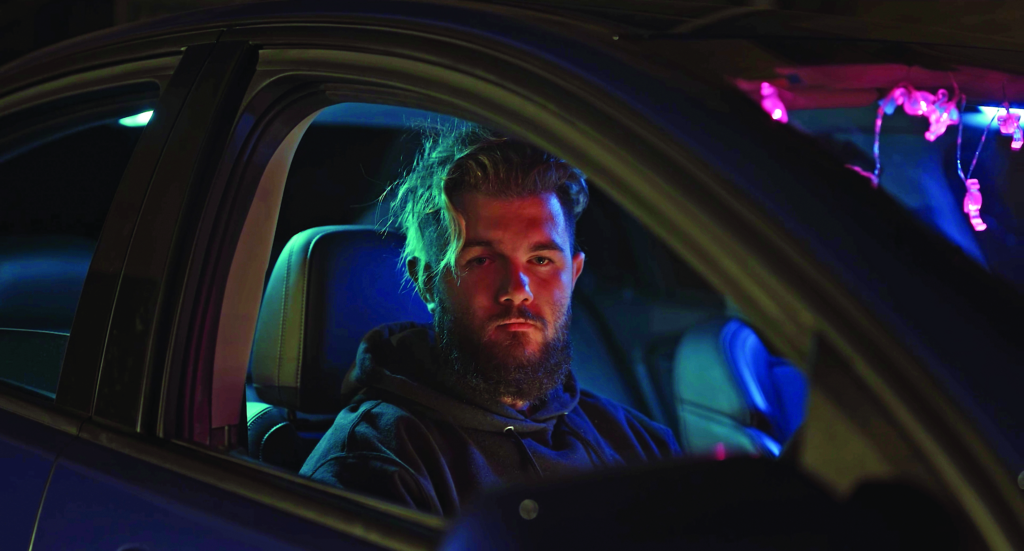
Taking a more expressive approach at other moments, Virag’s camera turns upwards to capture the sky that falls around the characters and the stars at which they gaze. These are not picturesque shots of the sun setting over the suburbs, but images that frame out the horizon and the reality on the ground altogether. These swirls of clouds and smatterings of stars provide moments for existential contemplation – for the documentary participants and audience alike. Other shots, of concrete highways, powerlines and a dead-end street, draw attention to the structures that surround and constrain the family.
There is no one narrative event that propels Because We Have Each Other towards its conclusion; rather, a series of events in succession reveals the extent of the family’s challenges and the toll that these take on the film’s two central protagonists. We see Janet attempt to calm Becky through a meltdown after a chess game goes awry, and later rush to Jessica’s side after she leaves a suicidal message on her mother’s phone. Meanwhile, Brendan is in trouble for drink driving, and Buddha has a close call in a motorbike-racing accident. It is not surprising that, in one scene, we see Janet sitting in her car in a shopping centre car park, staring into space through the windscreen as she expresses in voiceover: ‘I want to run away. I’ll come back. I just need to escape, just for a little while.’ This moment provides a brief insight into the impact of her emotional labour, which leaves her with little time to focus on her own wellbeing. ‘I want to love myself,’ Janet exclaims. Returning to Beckett’s theme of the search for self, one might read this scene as a reminder of how our identity is defined against – and perhaps somewhat lost in – our interaction with others. In the scenes that follow, the documentary, like Janet, moves on, consumed again with the various facets of family life.
By giving voice to marginalised people, Braithwaite aligns herself with the late, celebrated French filmmaker Agnès Varda, who summarised her own approach to filmmaking with the aphorism ‘Nothing is trite if you film people with empathy and love.’
Depictions of working-class families on screen are to be savoured, and seem increasingly rare in the current era of scripted reality television and carefully curated social media imagery. By giving voice to marginalised people, Braithwaite aligns herself with the late, celebrated French filmmaker Agnès Varda, who summarised her own approach to filmmaking with the aphorism ‘Nothing is trite if you film people with empathy and love.’[8]As expressed in her final work as director, the 2019 miniseries Varda by Agnès. Producer Chloé Brugalé explains that this quote was Braithwaite’s ‘compass throughout the making of this film, never wavering from engaging with the Barnes family members with absolute care, honesty and compassion’.[9]Chloé Brugalé, quoted in Because We Have Each Other press kit, op. cit., p. 7. The director’s approach of filming the family over time might be likened to Michael Apted’s Up series, which from 1964 to 2019 captured the life progression of fourteen participants from various social classes in seven-year instalments; or, closer to home, to Gillian Armstrong’s documentary series that follows three women from suburban Adelaide.[10]Armstrong’s series of films encompassed Smokes & Lollies (1976), 14’s Good, 18’s Better (1980), Bingo Bridesmaids & Braces (1988), Not Fourteen Again (1996) and Love Lust & Lies (2010). See Belinda Smaill, ‘History, Feminism and Time: Gillian Armstrong’s Documentary Series’, Metro, no. 167, 2010, pp. 102–7. While Because We Have Each Other’s project is smaller in scope, it nonetheless manages to paint an insightful and powerful picture of individuals in flux who experience personal growth due to a range of life events.
The film’s tender final scene, of Janet and Buddha dancing in a modest gazebo constructed in their backyard, reminds us of the profound love that holds their family together. Materially, they may not be wealthy, but their devotion to one another makes them rich. Despite the stress of everyday existence and the ongoing search for meaning, the family make things work because they have each other.
Endnotes
| 1 | Samuel Beckett, The Unnamable, Faber and Faber, London, 2010 [1953], p. 134. |
|---|---|
| 2 | Stephen Spender, ‘Lifelong Suffocation’, The New York Times, 12 October 1958, <https://archive.nytimes.com/www.nytimes.com/books/97/08/03/reviews/beckett-unnamable.html>, accessed 12 August 2022. |
| 3 | For more on highly superior autobiographical memory, see David Robson, ‘The Blessing and Curse of the People Who Never Forget’, BBC Future, 27 January 2016, <https://www.bbc.com/future/article/20160125-the-blessing-and-curse-of-the-people-who-never-forget>, accessed 12 August 2022. |
| 4 | Sari Braithwaite, quoted in ‘Interview with Sari Braithwaite’, Arenamedia, Because We Have Each Other press kit, 2022, p. 6. |
| 5 | Because We Have Each Other press kit, ibid., p. 4. |
| 6 | Patrick McCabe, quoted in ibid., p. 10. |
| 7 | Jeremy Virag, quoted in ibid., p. 9. |
| 8 | As expressed in her final work as director, the 2019 miniseries Varda by Agnès. |
| 9 | Chloé Brugalé, quoted in Because We Have Each Other press kit, op. cit., p. 7. |
| 10 | Armstrong’s series of films encompassed Smokes & Lollies (1976), 14’s Good, 18’s Better (1980), Bingo Bridesmaids & Braces (1988), Not Fourteen Again (1996) and Love Lust & Lies (2010). See Belinda Smaill, ‘History, Feminism and Time: Gillian Armstrong’s Documentary Series’, Metro, no. 167, 2010, pp. 102–7. |
